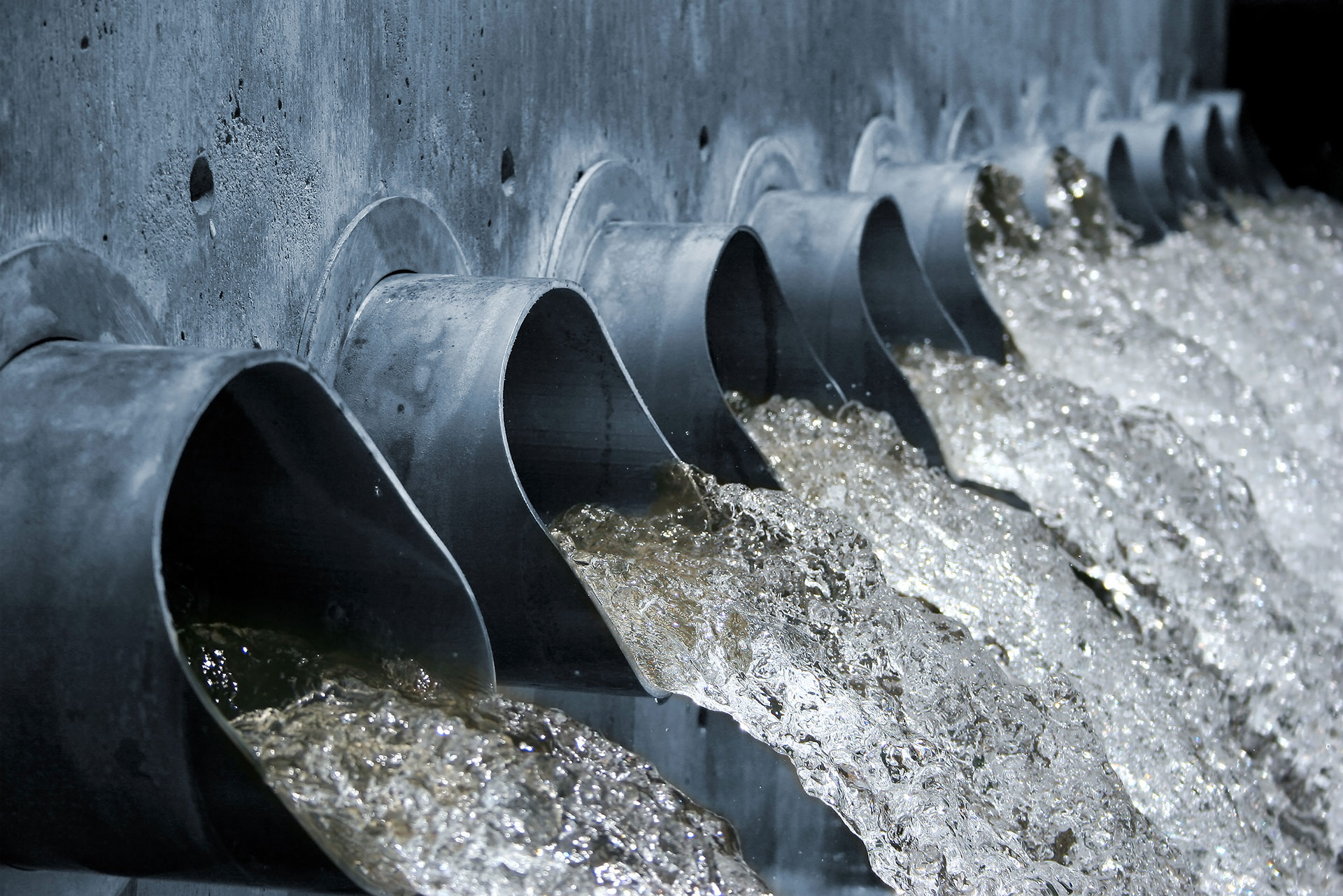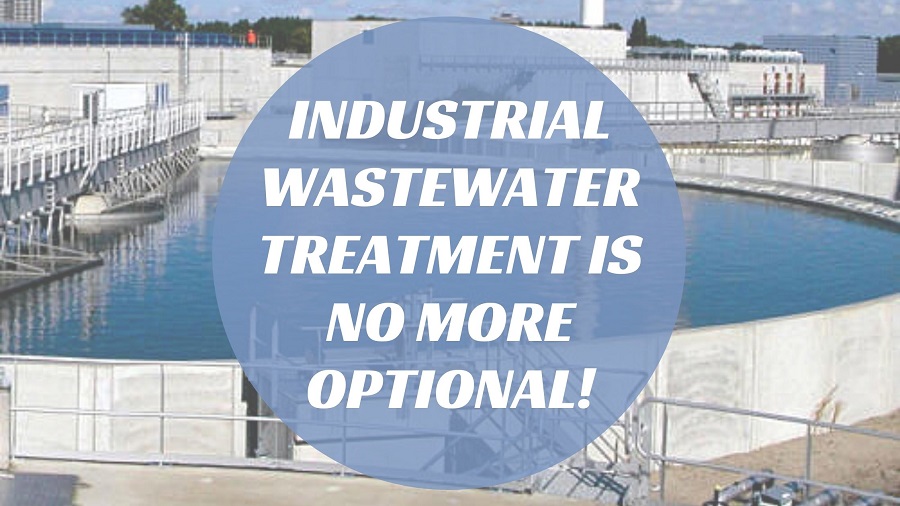Industrial Waste Water Treatment-- Lasting Solutions for Industrial Water Management
Industrial Waste Water Treatment-- Lasting Solutions for Industrial Water Management
Blog Article
Challenges and Solutions in Industrial Waste Water Treatment
The therapy of industrial wastewater presents a complex range of difficulties, varying from strict regulatory conformity to the complexities of price administration and technological restrictions. The irregularity in waste make-up better complicates the efficiency of traditional therapy methods, usually causing escalated operational expenses. Nonetheless, emerging options such as advanced oxidation procedures and innovative funding models show pledge in attending to these issues. As markets grapple with the demand for lasting practices, the question continues to be: what techniques will ultimately cause a balance between compliance, cost-efficiency, and ecological responsibility?
Regulatory Compliance Challenges
How can industrial facilities navigate the complicated landscape of regulative compliance in wastewater therapy? The regulative framework controling wastewater monitoring is complex, usually varying by territory and type of sector. Facilities has to stick to federal, state, and regional guidelines that determine effluent top quality standards, discharge restrictions, and tracking requirements. Failure to conform can result in extreme penalties, consisting of fines and functional closures.
To successfully handle these conformity challenges, centers should carry out robust monitoring and reporting systems that guarantee real-time information collection and evaluation. Regular audits and threat assessments can identify potential compliance spaces, enabling aggressive adjustments in treatment processes. Worker training programs concentrating on governing understanding and finest practices are necessary to promote a society of compliance within the organization.
In addition, involving with regulative agencies can provide beneficial understandings and clarify uncertain regulations. Facilities may likewise benefit from talking to environmental professionals who focus on wastewater treatment conformity, making sure that they stay informed of developing regulations. By taking on these approaches, industrial facilities can not just meet compliance requirements yet additionally boost their functional performance and environmental stewardship.
Price and Economic Barriers
Browsing regulatory compliance in wastewater treatment often offers significant monetary difficulties for industrial centers. The costs linked with implementing essential treatment modern technologies, keeping compliance with rigorous regulations, and taking care of functional expenses can be intimidating. Several organizations deal with high preliminary resources expenditures for the building or upgrading of wastewater treatment plants, which might stress budget plans, especially for medium-sized and little enterprises.
Moreover, continuous functional prices, including chemical, upkeep, and labor inputs, add to the economic worry. The changability of changing energy prices and the potential demand for added investments to meet progressing laws aggravate these financial pressures. In a lot of cases, the lack of economic incentives or support from government bodies makes it much more challenging for services to justify financial investments in innovative therapy systems.
Additionally, the financial viability of wastewater therapy remedies is typically examined, particularly for sectors with limited earnings margins. Therefore, it is important for commercial centers to explore economical methods, such as taking on innovative financing options, taking part in partnerships, and leveraging emerging modern technologies that can aid alleviate these financial obstacles while making certain conformity with environmental criteria.

Technological Limitations
Numerous technical constraints impede the effectiveness of industrial wastewater treatment processes. One considerable challenge is the inadequacy of existing treatment innovations to deal with complicated impurities. Lots of traditional techniques, such as activated sludge and chemical rainfall, struggle with the removal of arising toxins, consisting of microplastics and pharmaceuticals. This restriction often causes the discharge of improperly treated water, which can have detrimental ecological effects.
In addition, the scalability of treatment technologies presents an obstacle. While some sophisticated techniques, like check membrane filtration or advanced oxidation, reveal guarantee in controlled atmospheres, their implementation on a larger scale can be technically difficult and excessively pricey. Upkeep and operational complexities even more complicate the fostering of these systems, particularly for smaller sized markets with limited technical competence.
The assimilation of real-time surveillance innovations likewise stays not enough in numerous therapy centers. Without efficient surveillance systems, operators can not sufficiently analyze treatment effectiveness or spot prospective failings, bring about inconsistent effluent top quality. Consequently, addressing these technological constraints with r & d, alongside investment in ingenious options, is critical for boosting the efficacy of commercial wastewater treatment and ensuring governing compliance. Industrial Waste Water Treatment.
Irregularity in Waste Structure
In the realm of commercial wastewater therapy, the variability in waste structure provides a powerful challenge. Industries generate wastewater with varied features, influenced by aspects such as production procedures, basic materials, and operational methods. This heterogeneity makes complex the browse around these guys therapy procedure, as traditional systems often struggle to properly deal with the variety of contaminants present.
For instance, wastewater from food processing may consist of high levels of natural matter, while effluents from chemical production could include hefty metals and harmful compounds. This variance requires versatile therapy techniques to ensure conformity with ecological regulations and secure public wellness. Additionally, fluctuations in waste structure can happen in time, affected by changes in go to website manufacturing timetables, maintenance tasks, or the introduction of brand-new items.

Cutting-edge Treatment Solutions
Ingenious therapy options are crucial for attending to the complexities of industrial wastewater administration. Conventional methods commonly fall short in successfully removing a vast array of impurities, especially in facilities with diverse effluent streams. Current improvements concentrate on incorporating innovative modern technologies to enhance therapy effectiveness and sustainability.
One appealing strategy is making use of sophisticated oxidation processes (AOPs), which take advantage of powerful oxidants to break down natural contaminants. AOPs, consisting of photocatalysis and ozonation, can considerably reduce hazardous materials and improve effluent top quality. Additionally, membrane bioreactor (MBR) technology has gotten traction, integrating biological treatment with membrane layer purification, leading to high-quality effluent and decreased footprint.
One more ingenious option is the application of resource healing systems. Strategies like anaerobic digestion not only deal with wastewater however also create biogas, which can be taken advantage of as an eco-friendly energy resource. Moreover, the adoption of expert system and equipment knowing models can optimize therapy processes by anticipating variants in wastewater structure, consequently improving functional effectiveness.
These innovative solutions not just address regulative conformity yet also advertise environmental sustainability, paving the means for a more effective and resilient commercial environment.
Conclusion
In conclusion, dealing with the obstacles of commercial wastewater therapy requires a diverse approach that incorporates regulative conformity, cost monitoring, and technical advancements. A dedication to continuous enhancement in therapy approaches will ultimately add to the efficient administration of industrial wastewater and ecological protection.
The treatment of industrial wastewater presents a complex variety of challenges, varying from strict governing compliance to the intricacies of cost monitoring and technical limitations. Industrial Waste Water Treatment.Navigating regulative compliance in wastewater therapy frequently offers substantial monetary obstacles for industrial facilities. Addressing these technological constraints with research study and advancement, along with investment in ingenious solutions, is important for improving the effectiveness of commercial wastewater therapy and making sure regulative conformity
Wastewater therapy facilities have to spend in durable monitoring systems and versatile therapy technologies qualified of accommodating varying influent attributes.In final thought, dealing with the obstacles of commercial wastewater treatment calls for a multifaceted strategy that integrates governing compliance, cost management, and technological advancements.
Report this page